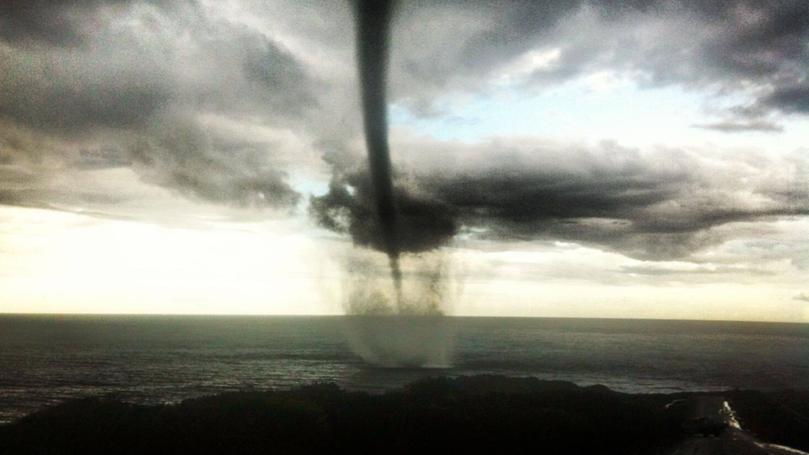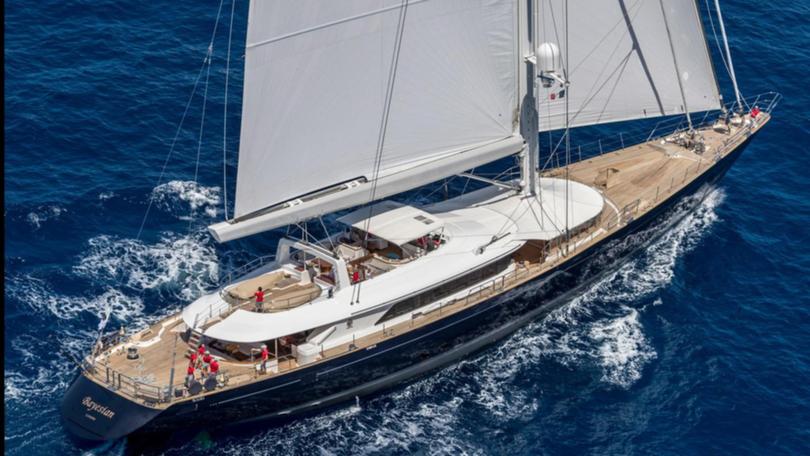The Economist: Could a waterspout have sunk the Bayesian superyacht off the coast of Sicily?

During a sudden nighttime storm on August 19, a superyacht sank off the coast of Sicily.
There were 22 people on board the Bayesian, including Mike Lynch, a British tech tycoon, and his wife, who owns the yacht. The Italian coastguard has rescued her and 14 others; one passenger was recovered dead and six remain missing, including Mr Lynch and his teenage daughter.
Witnesses say that the massive 56m-long vessel was submerged in a matter of minutes.
Sign up to The Nightly's newsletters.
Get the first look at the digital newspaper, curated daily stories and breaking headlines delivered to your inbox.
By continuing you agree to our Terms and Privacy Policy.The Bayesian seems to have been a victim of extreme weather. But because it sank at night, it is not yet clear exactly what was to blame.
One possible culprit is a tornadic waterspout, a weather phenomenon that occurs at sea, usually accompanied by high winds and waves.
Waterspouts grow out of powerful thunderstorms, many of which have battered Italy this summer. Just how dangerous are they?
Waterspouts fall into two categories: fair-weather and tornadic. Both are columns of spray and mist connecting clouds in the sky with the sea.
Fair-weather ones are weak, brief and form from the surface of the sea, climbing towards the sky with hot air. A tornadic waterspout, on the other hand, is essentially a tornado. Most tornadoes are formed by severe thunderstorms called supercells, during which hot air currents surge upwards while denser cold air falls. When those currents are exposed to differences in wind strength at different altitudes, they create a violently rotating vertical pillar that eventually touches the ground — or in this case, the sea.
Tornadic waterspouts can be very dangerous — but if one is indeed responsible for sinking the Bayesian, that would be highly unusual.
If the column of wind is strong enough, it might push a boat’s mast so far sideways that the boat can no longer right itself.
According to witnesses interviewed by Reuters, the wind seemed to push the yacht’s mast flat against the water.

Boat designers and owners tend to like very tall masts, partly because they can make a vessel faster and partly because of the attendant prestige — at 72m, the Bayesian’s was among the tallest aluminium masts in the world. This means that yachts often carry a lot of weight high up, making them less stable.
But vessels of this kind are designed such that they should not sink even if their mast goes underwater; their keel should provide a counter-weight that would right the boat.
That suggests that there were other problems — possibly portholes, hatches and the like left open.
The Bayesian also had a retracting keel, allowing it to berth in shallow harbours: if it was drawn up during the storm, it would have lessened the leverage exerted against the force of the wind on the hull, mast and rigging. And the huge updraft of a waterspout creates an equally fearsome downdraft: that might have pinned the boat in its capsized position, allowing water to flood in.
Given the growing consensus among scientists that extreme weather events, such as storms and floods, are influenced by climate change, many observers might wonder if rare tragedies like these could become more common. But though the number of reported waterspouts in the Mediterranean has increased in recent decades, researchers believe this is in large part because of better surveillance.
There is not enough data to be sure, but there seems to have been no marked increase since 2006, says Tomas Pucik, a researcher at the European Severe Storms Laboratory.
But it does not take a waterspout to make a bad storm dangerous. During both 2023 and 2024, oceans around the world have been freakishly hot. That can make storms more powerful and produce other worrying effects.
One, a “downburst”, in which heavy, wet air plunges to the sea surface and creates strong surface winds that spread out horizontally, is another possible explanation for the sinking of the Bayesian.
Marine inspectors may be able to find out exactly what happened to the vessel. Experienced sailors already know how unpredictable Mediterranean weather can be. Monday’s tragedy is a harsh reminder.
Originally published on The Economist
